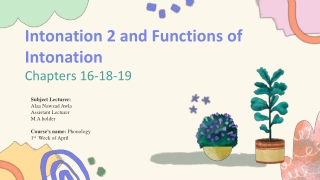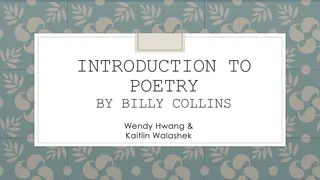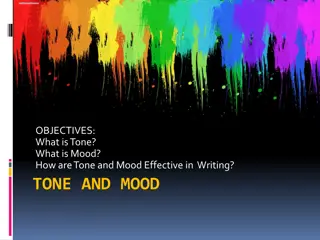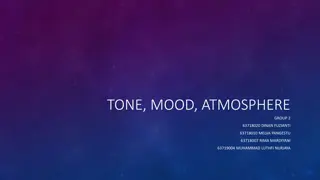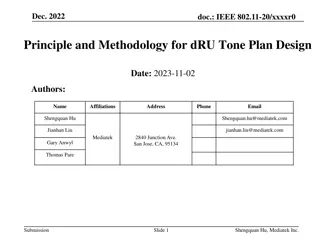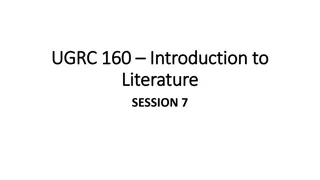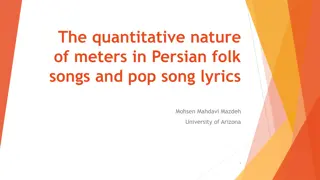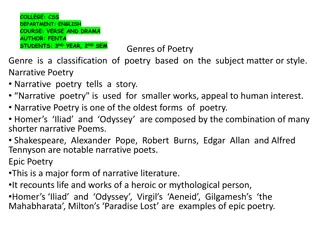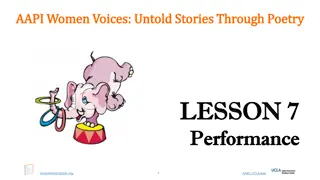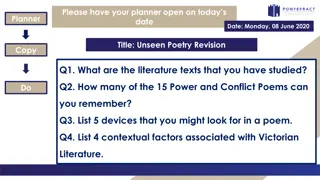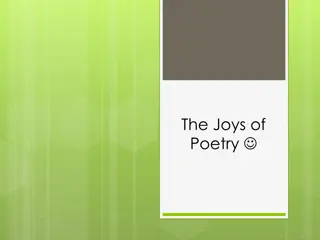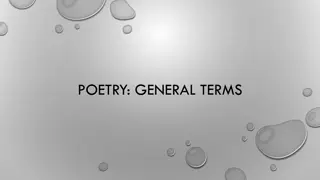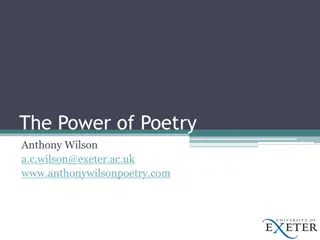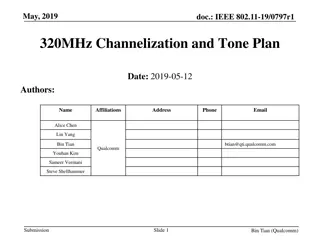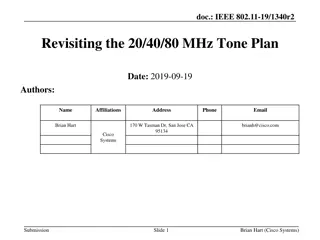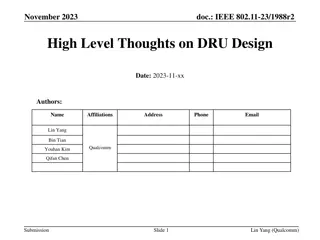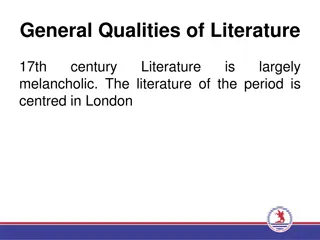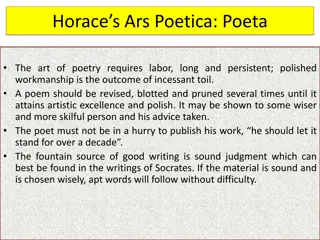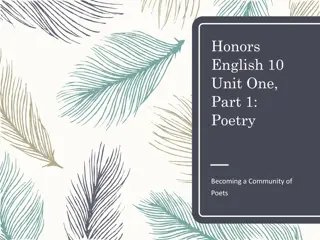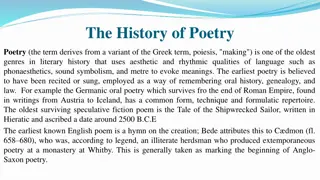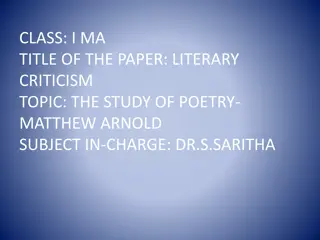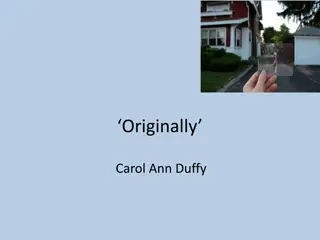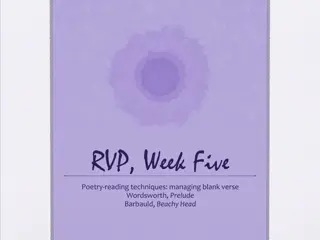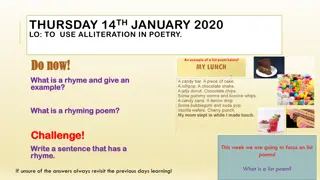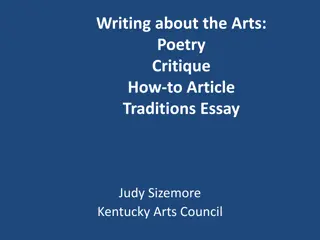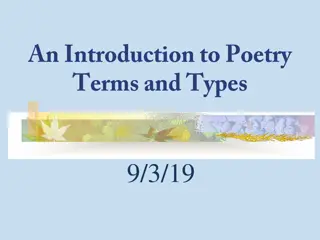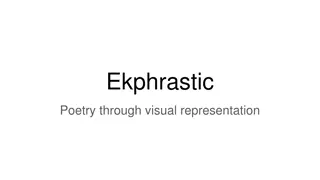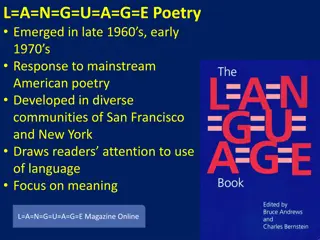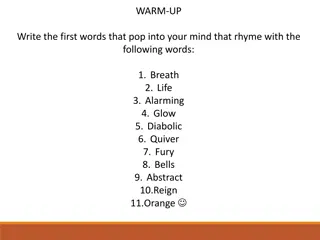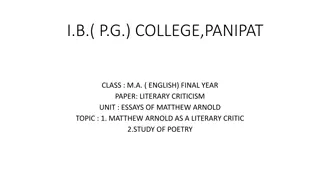Exploring Poetry: Speakers and Tone
Understand the significance of speakers in poems and how they contribute to the tone and meaning of the works. Delve into selected poems by Emily Dickinson, Leonard Adame, Langston Hughes, and more to analyze the speakers' nuances, attitudes, and the imagery they evoke. Discover how examining the speaker enhances the reader's interpretation and appreciation of poetry.
Uploaded on Sep 11, 2024 | 0 Views
Download Presentation

Please find below an Image/Link to download the presentation.
The content on the website is provided AS IS for your information and personal use only. It may not be sold, licensed, or shared on other websites without obtaining consent from the author. Download presentation by click this link. If you encounter any issues during the download, it is possible that the publisher has removed the file from their server.
E N D
Presentation Transcript
What is the Speaker of a Poem? The speaker in a poem is like the narrator in a short story. Some speakers are virtually indistinguishable from the poet, some are not. Speaker =/= poet. It is, instead, a mask or persona. Some speakers are fully developed characters, and others are more of a mystery and reveal themselves only through tantalizing hints. Learn more about speakers by reading the section in your text book on p. 480.
"I'm Nobody! Who are you?" by Emily Dickinson p. 480 The book mentions that the speaker here is at first "mischievous." Why? How does the speaker come to be more complex as the poem progresses? The poem inverts commonly held ideas about fame. How? Does examining the speaker here help you as a reader to get more out of the poem?
"My Grandmother Would Rock Quietly and Hum" by Leonard Adame p. 482 What words, what images reveal this speakers tone, or attitude, toward his grandmother and his heritage? This poem is also loaded with imagery. (Descriptions that appeal to the senses.) What images are striking to you? Are the images symbolic of anything?
"Negro" by Langston Hughes p. 484 Who is the speaker here? What comparisons can you make to My Grandmother Would Rock Quietly and Hum, which has a very personal, individual speaker? What images caught your attention as you read this poem?
A Relevant Quote from Dr. King Somebody told a lie one day. They couched it in language. They made everything black ugly and evil. Look in your dictionary and see the synonyms of the word black. It's always something degrading and low and sinister. Look at the word white. It's always something pure, high, and clean. But I want to get the language right tonight. I want to get the language so right that everybody here will cry out: Yes, I'm black! I'm proud of it! I'm black and beautiful! - Martin Luther King Jr.
"In a Station on a Metro" by Ezra Pound p. 536 First, read the poem to yourself. List everything that you see going on in the poem. What contrasts are created by these two lines? What associations do you have with the images and the settings? This poem is remarkable for its brevity. How do you think that brevity contributes to the effect of the poem?
Suicide Note by Janice Mirikitani p. 488 What patterns of imagery do you notice in this poem? What do they tell you about how the speaker views herself? What is the speaker s attitude about her parents? What reaction do you think the audience is meant to have to this situation? What do you think about the "not good enough" interruptions? Are they meant to be read as part of the actual note? (Notice the lack of capital letters and punctuation.)


